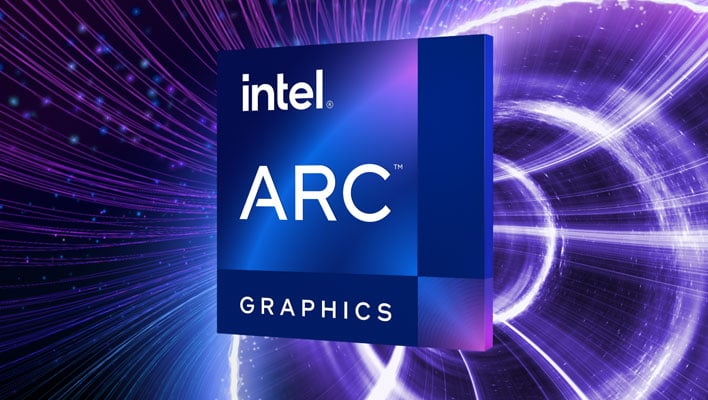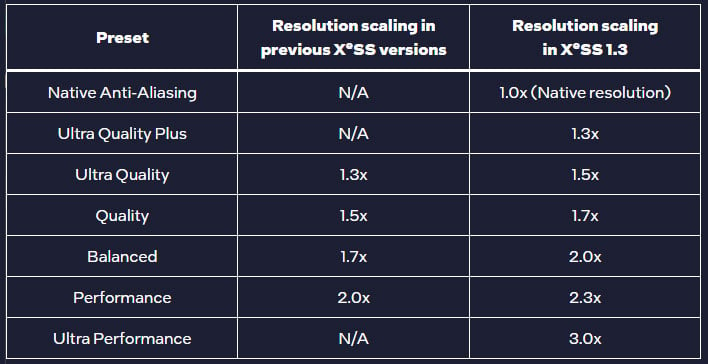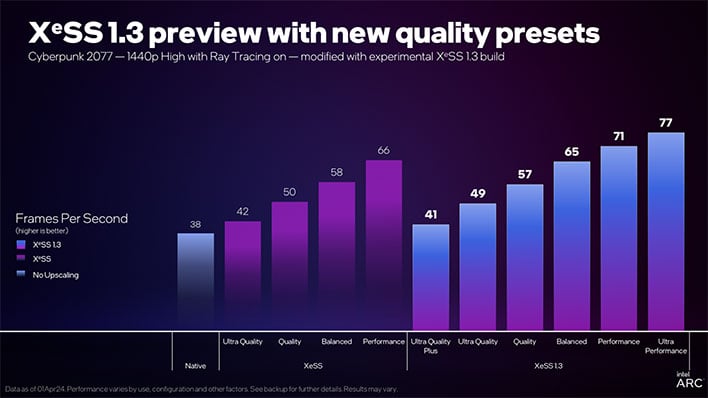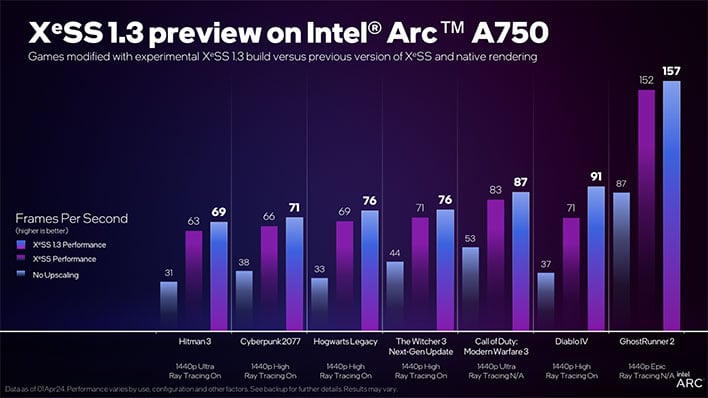Intel XeSS 3.1: New Profiles, Scaling Changes And Performance Claims Explained

Who doesn't like a free performance uplift? That's one of the ideas behind upscaling technologies, which render games at a lower, less demanding resolution and then upscales them. Intel's Xe Super Sampling (XeSS) is one such solution, and an upcoming version 1.3 update promises to boost performance even further. Importantly, Intel's also claiming a bump in image quality.
As of this moment, over 100 games support Intel's AI-powered XeSS upscaling. The XeSS 1.3 SDK, which is available on GitHub, leverages updated AI models for a better overall gaming experience.
"Through model optimizations, additional training, and in particular on difficult visual elements, the new XeSS version delivers more detailed reconstruction, better anti-aliasing, less ghosting, and more temporal stability," Intel states in a blog post.
There's a short video demo in the blog post that shows a scene from Like a Dragon: Ishin! with a before and after comparison. In particular, there is noticeable flickering in a bamboo curtain in the background, which is highly distracting and disrupts immersion. Using XeSS 1.3, however, those flickers mostly disappear—we can still see them, but to a much lesser degree.
Intel XeSS Presets: Resolution Scaling Changes And New Options
Of course, Intel is keen to talk about the performance increase that users can expect. To that end, Intel is claiming modest to big gains, depending on the title. Additionally, Intel added three new XeSS presets, including Ultra Performance, Ultra Quality Plus, and Native Anti-Aliasing. Along with that, Intel rearranged its resolution scaling, which now looks like this...

Those are across-the-board changes. Whereas the Ultra Quality preset previously scaled the resolution by a factor of 1.3x, it increases to 1.5x in XeSS 1.3. This is important to note in context of Intel's benchmark comparisons (we'll show those in a moment), as that's presumably where the bulk of gains are coming from.
As for the Native Anti-Aliasing preset, it's the only that doesn't render at a lower/faster resolution and then upscale the result. Instead, it "feeds a native resolution render through the new XeSS model to deliver the highest level of details with intelligent anti-aliasing."
That's essentially what NVIDIA's Deep Learning Anti-Aliasing (DLAA, not to be confused with DLSS) does—both lean on AI to bolster visuals.
Intel's Benchmarks Give A Performance Preview Of Upcoming XeSS 1.3 Update
Now, let's have a look at Intel's internal benchmarking data, starting with how performance in Cyberpunk 2077 scales with the new quality presets in play...
What this essentially highlights (or attempts to) is having more choices when it comes to balancing performance versus image quality. For example, the XeSS Ultra Quality preset (1.5X) matches the resolution scaling of the previous version's Quality preset (1.5x) while maintaining similar performance (49 FPS versus 50 FSP). The presumption is that it will look better on XeSS 1.3 Ultra Quality version the previous versions Quality preset. However, we'll have to test this for ourselves to see if that's actually the case.
Moving on...
Intel's first set of benchmarks focuses on its Arc A750 graphics card. The average uptick in frames per second (FPS) across the board amounts to around 10% when comparing XeSS 1.3 to a previous version. They're mostly modest gains, which is why it's important to note the changes in resolution scaling. However, Diablo IV's performance shoots up by 28% in Intel's testing, so there's more going on than just moving the goal posts.
The second set of benchmarks focuses on a Core Ultra 7 155H processor with a built-in Arc GPU. Gains here are around 8%, and much bigger when comparing XeSS 1.3 to native rendering (The Witcher 3's FPS, for example, is more than double with XeSS 1.3 versus native).
"For these Intel-only tests of the upcoming version of our AI upscaler, Intel engineering labs used a modified build of XeSS and popular games to validate improvements. This gives us an idea of how XeSS 1.3 may be able to improve performance further with future enabled games," Intel explains.
As mentioned, Intel has made its XeSS 1.3 SDK available on GitHub. Intel also says it's working with developers to take advantage of the XeSS 1.3 update.




